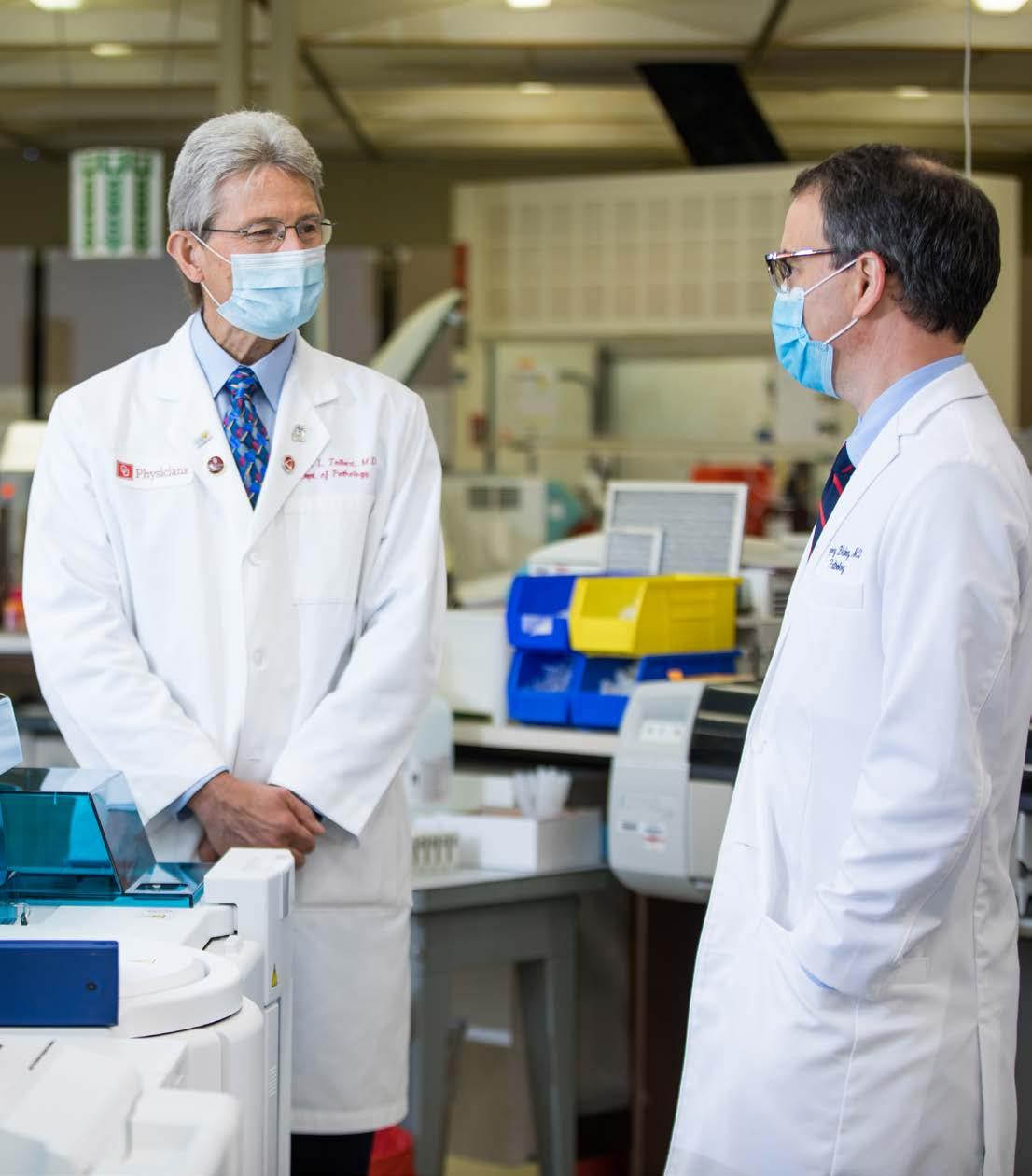
3 minute read
All Hands on Deck to Meet Testing Demand for COVID-19
As COVID-19 began spreading across the United States, clinical laboratory personnel accelerated efforts to help diagnose the disease. The OU Medicine Laboratory met the challenge by quickly deploying several tests for the virus.
Patient specimens at OU Medicine are placed on one of six different platforms depending on how rapidly results are needed, said Cindy McCloskey, M.D., director of Clinical Microbiology and Virology Laboratories and associate professor in the Department of Pathology. Patients in the emergency department, for example, need to be tested promptly if they are going to be admitted to the hospital. All patients having surgeries or outpatient procedures must be tested as well. The OU Medicine Laboratory also provides COVID-19 testing for the community from samples gathered at “swab pods” in Oklahoma City and Tulsa.
Having several testing options allows the OU Medicine Laboratory to operate 24/7 and process more than 1,000 specimens each day, with results typically available in less than 24 hours and as little as two hours for the most critical patients. Quick turnaround is important for a variety of reasons: so that a person can immediately quarantine if the test is positive; be admitted to a COVID-only section of the hospital; or return to work after recovering from the virus, among others.
Being able to conduct 1,000 or more COVID-19 tests daily, along with regular hospital testing for other illnesses, is an achievement. To put it in perspective, the OU Medicine Laboratory previously conducted 650 respiratory virus tests per week during a busy flu season, McCloskey said. “I’m proud that we’ve been able to ramp up testing to meet demand, turn around test results quickly, and not have a backlog,” she said.
The laboratory also created a new test that avoids many of the supply chain issues that have plagued other laboratories. Through an innovative partnership, OU Medicine, its academic partner, the University of Oklahoma Health Sciences Center, and a neighboring institution, the Oklahoma Medical Research Foundation, created the Oklahoma COVID-19 polymerase chain reaction (PCR) test, a new approach to analyzing specimens.
“The spirit to combat COVID-19 has been very high,” said Michael Talbert, M.D., Chief of Pathology Services for OU Medicine and chair of the Department of Pathology. “Because of our collaboration, we developed a new test in about two months that otherwise would have taken a year. Everyone contributed their expertise, while also making other COVID tests operational and continuing our routine care for patients in OU Medicine hospitals and clinics.”
The idea to create a new test for COVID-19 originated with Joel Guthridge, Ph.D., a researcher at the Oklahoma Medical Research Foundation and adjunct faculty member in the Department of Pathology. Guthridge and his team contributed their experience with the company Fluidigm, which specializes in microfluidics, or the use of a tiny amount of chemicals to test patient samples. Because different chemicals are used in the Fluidigm testing instrument, and because such a small amount is necessary, the OU Medicine Laboratory doesn’t have to compete for chemical supplies with this particular test, Talbert said. The Oklahoma COVID-19 PCR assay can analyze 186 patient specimens at once, and, using microfluidics, each test is performed five times to ensure accuracy. Because the process is highly complex, the equipment was retrofitted with robotics, which saves time and avoids human injuries due to repetitive motions.
The traditional season of colds, influenza and respiratory syncytial virus (RSV) has arrived, which may further increase demand for lab testing. The OU Medicine Laboratory is preparing even more options, including testing for COVID-19, flu and RSV from the same patient specimen instead of three different samples, said Gregory Blakey, M.D., Vice Chief of Pathology Services and Associate Professor in the Department of Pathology. OU Medicine is also pursuing a test for COVID-19 using saliva, instead of the nasal swabs that have been used to date, Blakey said. Developed at the Yale School of Public Health, the test provides even faster results. “This simple test, called SalivaDirect, will increase our capacity so we can help detect more cases and drive the infection rate down,” he said.










